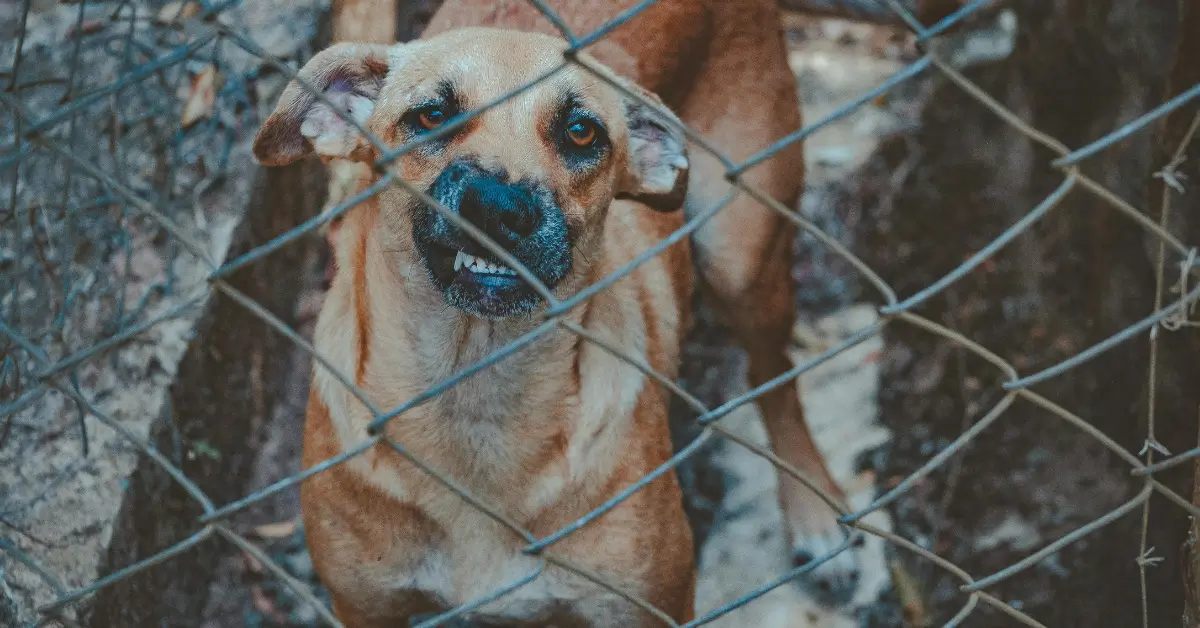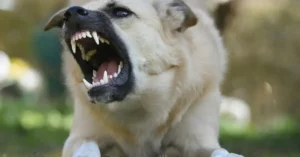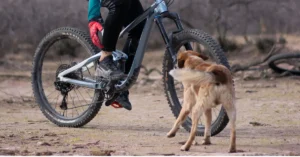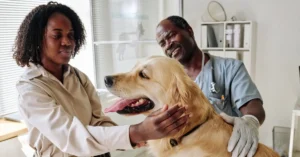Have you ever wondered, “Why does my dog growl at me and not my husband?” You’re not alone. Many dog owners face this puzzling situation. Dogs communicate through growling, which can mean anything from excitement to fear. It’s important to decode these growls to strengthen your bond with your furry friend.
Growling isn’t just noise; it’s a form of communication for dogs. They might growl to show they are happy, scared, or uncomfortable. Understanding why your dog growls at you but not others is the first step to improving your relationship.
This guide will help you understand why your dog behaves this way and how you can help them feel better. Learning about the triggers and effective ways to respond can make your dog happier and your home more peaceful. Let’s explore how to address this growling puzzle together!
Deciphering Your Dog’s Growling Behavior
In rare cases, growling can be a dog’s way of communicating various feelings, such as discomfort, protection, or affection by observing when and how your dog growls, you can begin to recognize what your dog may be trying to express. It’s crucial to consider the context of the growl to respond appropriately. Some growls indicate the dog is playful, while others signal discomfort or fear.
Additionally, if your dog always growls in specific situations, it could be a first instinct to provoke or defend itself against what it perceives as a stressor. Understanding these triggers can help you determine a course of action to help your dog feel more at ease, such as behavior modification techniques or socializing your dog more with people and other dogs to reduce fear-induced aggression.
Exploring the Roots of Selective Aggression
Understanding why your dog may favor one person over another or react differently to various family members can shed light on its behavior. Dogs’ relationships with humans can strongly influence their reactions, often leading to protective behavior or selective aggression. Knowing where it all started can help you address these behaviors more effectively. For instance, a dog may growl to protect its favored person, seeing other family members as a threat.
This kind of resource guarding allows your dog to communicate discomfort. Recognizing these signs as expressions of the dog’s instinctive protective stance rather than mere aggressive behavior can guide you to stop your dog from growling. Training your dog to stop reacting defensively and teaching it that family members are not competitors but co-protectors can help modify this behavior.
Additionally, if a growling dog shows signs of stress or illness, a veterinarian should assess whether medical intervention is needed to alleviate underlying issues contributing to this protective aggression.
Attachment and Relationships: Why Your Dog May Favor One Owner
Dogs often form strong attachments to the person who most frequently cares for their needs, such as feeding, walking, and playing. This deep connection can lead the dog to act protectively towards them. Should the dog view another person as a potential threat to this bond, it may react by growling to defend its companion.
To mitigate this, it is beneficial for all household members to share in the dog’s care, which helps the dog trust everyone and decreases its likelihood of growling for protection. Alternating feeding duties, taking turns walking the dog, and individually playing time can distribute care evenly, ensuring the dog feels comfortable and secure with everyone in the home. This approach eases stressful situations and promotes a more territorial balance, reducing the dog’s need to protect one favored person aggressively.
How Training and Behavioral Conditioning Can Help Stop Growling
A dog’s early training and experiences significantly shape its reactions to people and various situations, influencing behaviors such as growling. When a dog is inconsistently trained or has negative experiences, it may develop habits of growling at specific individuals or in particular contexts as a way to communicate. These reactions can often be seen when the dog tries to express possessiveness or feels threatened, exhibiting aggression towards what it perceives as intrusions into its territory.
Regular and structured training sessions that involve all family members can help modify this behavior, teaching the dog to associate family members with safety and positivity. Techniques like obedience training and positive reinforcement are critical, as they encourage the dog to react calmly and see interactions as harmless. Using consistent training approaches, family members can help the dog feel relaxed in different situations, reducing the likelihood of aggressive responses and making the home environment more peaceful.
Strategies for Addressing and Alleviating Growling
Understanding and addressing why your dog growls is crucial for maintaining harmony among all family members. A growl can indicate discomfort or serve as a way for your dog to set boundaries. To handle this effectively, consistent and positive methods are essential. This section outlines actionable steps to reduce unwanted growling and encourage positive behavior in your dog.
It’s necessary to recognize that every dog may growl, and this behavior can often be a sign he’s uncomfortable or frightened. Proper training, possibly at a dog park where your dog can learn to be less aggressive towards others and more comfortable around many dogs, can help. If these issues persist, consulting a vet to rule out any symptoms of illness or involving a trainer could provide additional strategies to modify your dog’s behavior.
Achieving Handler Consistency to Curb Unwanted Barking
Achieving handler consistency is crucial for practical dog training and behavior management. When each family member responds differently to a dog’s actions, it can confuse the animal and lead to stress-induced behaviors like growling or barking. To prevent this, it’s essential to unify the family’s approach to the dog’s training and daily routines. Agreeing on commands, rewards, and disciplinary actions ensures the dog gets the same message from everyone. This consistency helps the dog recognize what is expected, feel more secure, and reduce the chance of stress-related reactions. Regular family meetings to discuss and update training strategies can be beneficial in maintaining this consistency.
Using Positive Reinforcement to Encourage Good Behavior
Positive reinforcement is a powerful method to shape and encourage your dog’s behavior to stop growling. This approach involves rewarding the dog for calm and non-aggressive behavior with treats, praise, and affection, reinforcing the actions you want to see more frequently. Additionally, incorporating the help of a professional dog trainer can enhance this process. A trainer can offer personalized strategies and insights based on your dog’s specific needs, making the training process more effective and efficient. They can also teach you and your family how to interpret the dog’s body language and signals, further improving communication and reducing incidents of aggression or fear-based growling.
These approaches to managing growling highlight the importance of a consistent and positive environment for your dog. By understanding the triggers of growling and addressing them with appropriate training techniques, you can help your dog feel more at ease and behave more sociably around all family members. This helps mitigate the dog’s tendency to growl and enriches your relationship, promoting a happier, more integrated family dynamic.
Enhancing Communication to Understand Growls
Improving communication with your dog is essential for understanding why it growls. Growling serves as a form of expression for dogs, and deciphering these signals is crucial for owners. By observing when and where your dog growls, you can identify patterns and triggers related to people, places, or times that upset your pet. This understanding can be deepened by learning about canine body language, which will help you better interpret your dog’s emotions and react appropriately to their needs.
When to Seek Veterinary or Professional Help
Occasionally, when a dog growls, it could signify deeper issues that need expert attention. If your dog suddenly starts growling more often, or if it comes with signs of aggression or fear, it’s advisable to see a veterinarian to check for any health problems causing this behavior.
Additionally, if the growling doesn’t stop with the usual training methods, consulting with a professional dog trainer or a behaviorist may be necessary. These professionals can provide customized advice and strategies based on their experience training with aggressive dogs, aiming to address and modify your dog’s behavioral issues specifically.
Wrapping Up: Key Takeaways on Managing Growling
In conclusion, understanding why your dog growls at you and not others can be complex, involving factors such as attachment, training, and the dog’s past experiences. You can significantly improve your dog’s behavior and strengthen your bond by applying consistent training methods, engaging in clear and positive communication, and involving professionals when necessary. Remember, each dog is unique, and the key to success is patience, consistency, and a willingness to understand your dog’s specific needs and triggers. Effective methods can make your dog feel safer and less likely to growl, fostering a calm and joyful home atmosphere for everyone.
Through this detailed exploration and proactive strategies, you can understand and address why your dog might be growling selectively. Remember, the goal is not to put down your dog’s natural communication but to understand it and respond in ways that support their well-being and your family’s harmony.
FAQ Section
Q: Why do some dogs growl?
A: Some dogs growl as a sign of communication, fear, anxiety, or aggression. It is essential to understand the context in which a dog is growling to address the behavior effectively.
Q: How should I react if my dog growls when someone approaches?
A: If your dog growls when someone approaches, it is important to remain calm and avoid punishing it. Remove the dog from the situation and seek the expert’s help to address the underlying reasons for the behavior.
Q: Can a dog that growls be trained not to bite?
A: A dog that growls can be trained not to bite through positive reinforcement training techniques. Working with a qualified trainer is important to modify the behavior effectively.
Q: What are the reasons a dog may growl when touched?
A: A dog may growl when touched due to pain, fear, aggression, or past negative experiences. Understanding the underlying cause of the growling is crucial in addressing the behavior.
Q: Is dog growling a sign of dominance?
A: Dog growling can be a sign of dominance in some cases, but it can also stem from fear, anxiety, or insecurity. Assessing the specific behavior and context is vital to determine the reason for the growling.
Q: How can I train my dog to stop growling aggressively?
A: To train a dog to stop growling aggressively, it is essential to use positive reinforcement techniques, seek professional guidance, and address any underlying issues causing the behavior, such as fear, anxiety, or aggression.
Q: Should I back away if a dog is growling at me?
A: If a dog is growling at you, it is advisable to back away slowly and avoid direct eye contact. Do not make sudden movements or escalate the situation further, as this can lead to aggression.
.



